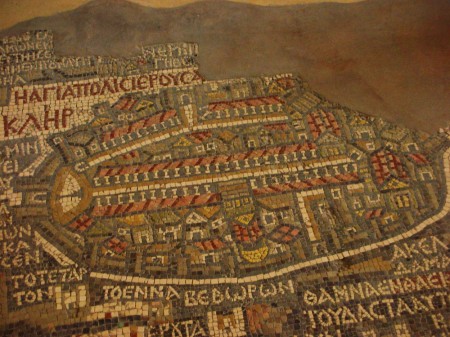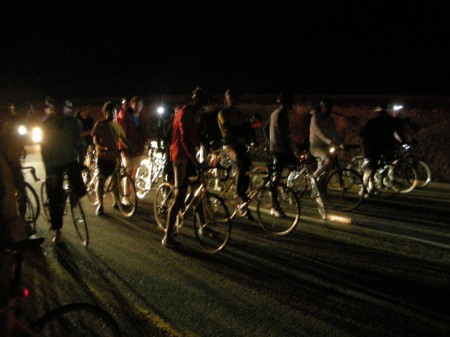After the highly successful Christmas Concert that I participated in over four months ago, the choir was shifted around a little, started going by its official name of “Dozan wa Awtar” which I had never heard of before until that point, and started practicing much harder songs. This weekend, our hard work paid off with the Easter concert held at a local Maronite parish, St. Charbel’s church, located a few miles outside of town and, interestingly enough, under large-scale construction.

If we hadn’t had a tarp over the huge hole of the front door, the performance nights would have been MUCH colder
Shireen explained to us that there were two reasons why we were holding the concert in this particular parish. For one, she was happy to help the new church by making a large percentage of the proceeds going to fund the construction of their new building, and even happier that we could “show off” the half-made building to the audience members so that they could see what their money was going to. But, on a more negative note, other ministers and priests that had worked with Shireen before turned down the choir from performing in their churches because of one particular piece: Zahret al-Mada’in.
The name of the song means, “Flower of the Cities” and it was composed by a Lebanese woman named Fairuz back in the 1970’s. Fairuz is a Christian, and meant her song to be a wistful ballad of love, compassion, and all religions coming together in the holy city of Jerusalem, or Al-Quds as it’s known in Arabic. The song came to be one of the most famous pieces in the Arab world, and Fairuz’s beautiful voice and message of an end to violence to the Holy Land will get a cheer from any Arab audience it’s played for. However, this particular arrangement of the piece by Edouard Toriguian was meant to expand upon Fairuz’s theme and be like a walk down the street in Jerusalem, hearing Christian and Muslim prayers in Syriac, Greek, Armenian, Latin and Arabic. This version also contains the Takbiir as the final words; known more specifically to the Western world as “Allahu Akbar,” God is the Greatest. Because this phrase has been so strongly associated with Islam for so long, every other minister that Shireen spoke to apologized and said they couldn’t afford to risk alienating their congregations by using a phrase that, for some Arab Christians, is offensive. So, St. Charbel’s became our venue of choice.
The church itself, when we first practiced inside of it a few days before the concerts, came as a little bit of a shock. Shireen had already told us that “it’s not quite done yet,” but when I first saw a pile of concrete covered in scaffolding, I realized what she really meant was, “it’s a construction site.” Once we got inside though, most of us found the cool concrete walls, the huge uncovered windows and the chirping of the birds flying around us quite pleasant and we agreed that this would be a unique and special place to perform. A smaller chapel connects to the half-built church by means of an underground passageway, so we knew that if the weather turned out to be unfriendly towards us, we could always relocate if we had to.
Our entire concert repertoire contained only one song in English, but neither was Arabic the primary language; Zahret al-Madain was the only piece. Out of the five other songs, three of them were in Latin, one in Spanish, and the one in the video here, “Oremus,” was simply humming and vocalizing, representing the motion of the planets. We also had a special guest soloist performing with us, a young Jordanian opera starlet named Dima Bawab who studied in Paris. Between our songs and Dima’s two solo pieces, we had an excellent show lined up for our guests. I dutifully sold my tickets to my colleagues at both the Christian academy and at EGT, and on Wednesday, my fellow choristers arrived early to put the finishing on touches on things before our guests started arriving.




